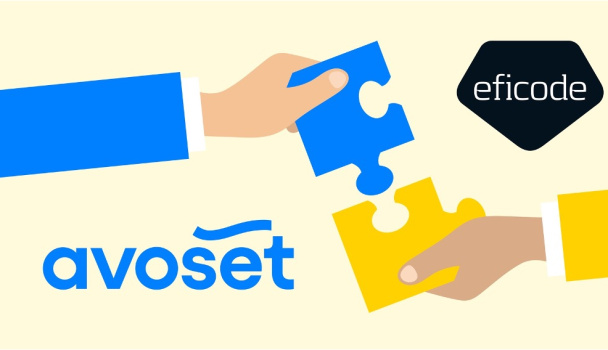6+1 tips for renewing growth company board

The board of a growth company can bring a great deal of insight, professionalism and opportunities to the company, but only if it is set up the right way. The same goes for changing the board. This article discusses renewing the board: when it should be done, why it should be done and how it should be done.
December 2020
We have written about board work from many different perspectives in the past, including how to engage board members and what a startup board should focus on. This time, we are covering the interesting and complex topic renewing the board of your growth company.
Growth companies are under constant change, arguably often a more fast-moving one than their peers. This means that what the company needs from its board also changes. In the early stages of a startup, the board helps set up sales and operations as well as bring the product or service to the market. Expertise required at this phase is different than later when the company has entered the growth phase and is scaling up. And, again, when growth is stabilizing because the company has become large in size, it needs skills and expertise related to leading large companies specifically.
Renewing the board can be challenging in many ways. Changing nothing, staying in the comfort zone and continuing with the old board members – all of whom have become very close colleagues – can feel very tempting. It is not a strategically sound choice, however.
In this article, we have compiled 6+1 questions and answers that cover all the basics of how to renew the board of your growth company, with valuable insight from Juha Frey, Timo Lappi and Takeoff Partners’ Markko Vaarnas. Juha Frey is the Chairman of the Board for Boardman Grow, a Finnish non-profit network focused on boosting the performance of entrepreneurs, boards and advisors in growth companies. Timo Lappi is a growth entrepreneur and CEO of Heltti.
1. When is the right time for board renewal?
Although board should probably not be changed every year, you should address the topic every year. The leadership should ask themselves whether the board is optimal or if it is in need of revitalization. And if they decide changes are needed, they should agree on a timeline.
“It is also important to start working on a board renewal well ahead of time. You need at least 2 to 4 months to find the right people to replace the outgoing board members. Deciding three weeks before the annual general meeting that changes must be made is not ideal for anyone involved,” Markko Vaarnas says.
Juha Frey advises to define the expected length of a board post before it begins.
“You should in fact define the general length of board positions when you are assembling the first board. For example, you could agree that the board term is always two years by default, with an option to extend by another year and then by one more year if it feels justified at that point.”
He also adds that assembling the first board is also a great time for defining the board’s role and the size of effort required, along with what is expected of each member. That way, it is much easier to check whether all parties have delivered to expectations – also in the future.
2. Who should initiate the renewal?
The main ownership of the company should be the party to realize that the board should be revitalized. Often this means either the CEO and/or the chairman of the board. Chairman of the board has a particularly crucial role here.
“They need to be professional enough to identify not only the need to make changes to the rest of the board but also the potential need to have themselves replaced,” Markko Vaarnas says.
Timo Lappi also talks at length about the particular importance of always having a professional chairman in charge, because it impacts the performance of the entire board – and consequently also how the board is being renewed.
“At best, they listen a lot and talk less and manage to get the full potential out of their fellow board members. A great example of a good chairman is Kaj Hagros who is Heltti’s Chairman of the Board. Our meetings are organized by theme for the entire year, which helps everyone prepare. I’ve also noticed that the meetings of good chairmen never run overtime.”
3. How should changes to the board be initiated?
Long before any “official” steps, there should be transparent and honest conversation among the current leadership. The existing board members should be given the opportunity to explore their commitment to the company and reflect whether they feel they still have more to give.
“Simultaneously, this allows the leadership to start mapping not just existing but also future needs of the company – along with what kind of skills and expertise are needed from the board to meet them. This way, it is easy to also identify if there are gaps that need to be filled,” Markko Vaarnas describes.
Juha Frey agrees that the required experience and expertise is the first priority to define the profile.
“The second aspect to consider are network and connections needed from the incoming board members, for instance when it comes to investors, clientele or other stakeholders. And, in addition, you should also clearly define what kind of a role the board will be playing and how much time and effort are needed from each member, old and new,” he says.
4. Should the board be renewed all at once or one by one?
Neither – ideally you should think about replacing 2 to 3 people at once. If you replace only one at a time, the new person tends to adapt to the existing culture, which will limit their opportunity to refresh the leadership. On the other hand, you also need to ensure that some people remain on the board so the historical insight on e.g. what has already been tried and tested and how the company management prefers to work remain within the board.
“The only exception to this would be a time of crisis or other remarkable change of pace, in which case it may make sense to replace the entire board,” Timo Lappi says.
5. How to find the right people join the board?
The same way as when you set up the board. As mentioned above, defining the needs for the next few years is key. When you know what is needed, you will know which ones are met by the existing board members who intend on remaining.
Be sure to also check whether the skills you need are best addressed by the board. If you need help in actual operations – beyond advice and best practices – you may in fact need a new employee instead of a new board member.
As for how to find the right people for the job, there isn’t any single correct answer.
“The entire team should reach out to their network and extended network with clearly defined profiles to see if there are any matches. If there are not, it’s often a good idea to contact someone who is from the same industry or background but not right for the job itself – they may be able to make a recommendation,” Markko Vaarnas summarizes.
In addition, Timo Lappi suggests considering the option of going out in the open with a clearly defined profile.
“In my opinion, there is too much secrecy around board appointments. Obviously it does require time and effort to organize a public search – but it can be a powerful way to get excellent candidates. We tried it with Heltti and received 130 applications for the post, about a third of which were extremely interesting. Eventually we narrowed it down to two people who were such a great fit that we ended up taking both.”
The key advantage to searching further and wider, Timo Lappi highlights, is that it is the way to extend the opportunity outside the social bubble of the existing team. This is likely to also promote diversity, which is a known success factor because different people think differently.
6. How long should a person stay in the board?
As a rule of thumb, the optimal time is three to five years. The first year is spent getting to know the company. The second year tends to be the most efficient one, and the third year is typically also good. After the third year, it is advisable for the board member to stop and question whether they are still contributing in a meaningful way.
In a well-run company, this question would be initiated periodically or would have been defined at the get-go, as mentioned above.
The exception to this rule of thumb are the main owners or other people who have an exceptional commitment to the company.
“I’d just like to add that having and especially keeping shareholders on the board should never be automatically accepted. They can be a good fit – but not because they are shareholders. Being a shareholder does not make anyone a good board member,” Timo Lappi reminds.
+1. What if you need to tell someone they should leave?
Admitting that it is my time to go can at times be painful, which is why the question of renewing a board can become a delicate matter. Being very transparent, starting conversations as early as possible and talking about the profiles and skillsets needed in the future instead of talking about particular people helps manage the change in a professional way.
Only change is constant
Recently, Boardman Grow published a report on growth company boards. Made by LUT University, it was based on answers from 21 Finnish growth company CEOs and board members. According to the report, the board is usually assembled when the company has grown enough to start needing a more organized approach to leadership and skills the founders feel they don’t possess. Quite often, the early days of a startup are characterized by varying degrees of chaos, and the board can bring not just skill but also order and valuable resource to it.
The same goes for any point in time when the board is in need of revitalization: if either the external situation or the company has changed, again new kind of skill and energy are needed to steer it towards continuing growth.






